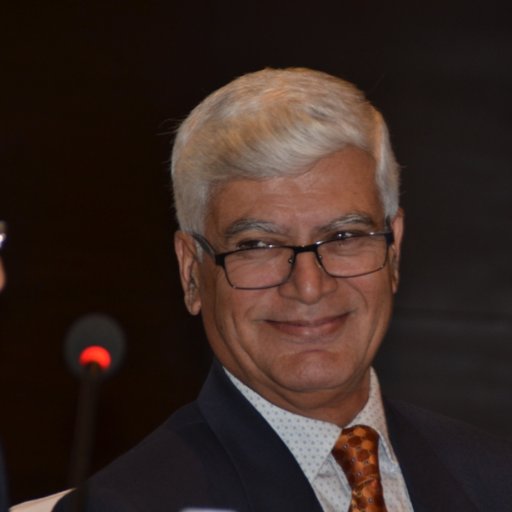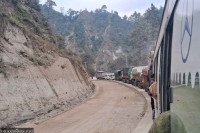Opinion
Three friends
Can Nepal rise to the occasion to put its house in order first and then reap the rewards of geography?
Shambhu Ram Simkhada
Nepal’s location between India and China is a fact of geography. China and India are both changing, and Nepal too is experiencing far-reaching changes. This is reality. Historically, Nepal has been the meeting point of two great civilisations, and today the central Himalaya is one of the epicentres of an impending global paradigm shift. A small nation between two big powers is considered to be ‘revenge of geography’. Translating revenge into reward requires political skill and diplomatic ability to manage relations with emerging and current superpowers. Will ‘Rising China’ and ‘Shining India’ go the way of other great powers as they march forward to attain the status anticipated of them in the future? And if so, how are relations between them likely to evolve and affect the neighbourhood and Nepal in particular?
Economic growth prospects in both India and China remain high with the former expected to grow at over 7 percent and the latter at around 6 percent. Trade is becoming a significant dimension of economic integration and bilateral relations between the two. Foreign direct investment (FDI) flow is relatively small now, but could see a quantum jump. So, on the whole, initiatives like the China-Nepal-India economic corridor, trilateral cooperation, One Belt, One Road (OBOR) and Nepal’s aspiration to be a bridge between our two great and friendly neighbours should have a positive impact on Nepal-India-China relations.
Economics and politics
What really drives the course of inter-state relations, economics or politics? The discourse is interesting. Adam Smith argued long ago that the contradiction between political relations and economic rationality will be settled in favour of the latter, thus giving primacy to economics. The Marxist position, which says that “the mode of production determines the superstructure
of political relation”, is similar to the position of the classical liberals. But the nationalist-realist school asserts the political determination of economic relations.
A proponent of economic liberalism himself, Jacob Viner’s conclusion that “political and security considerations are primary” is significant.
While efforts at both inter-governmental and other levels are being intensified to change the dynamics of overall political and security relations between India and China, the unsettled border issue, troop movements there and China’s stance in the Nuclear Suppliers’ Group recently are only some signs of the competitive nature of the relations between the two. There is yet another area of concern, the stereotypes of history in which the rise or decline of great powers is often associated with wars and conflicts rather than a peaceful transformation as China and India have managed so far. In Nepal’s case, this anxiety is exacerbated by the political and diplomatic deficit in managing our own internal political transition. Nepal’s geo-political sensitivity and vitality but also complexity of proximity often comes out into the open in Nepal-India ties and is now also appearing in Nepal-China relations.
Talking about Nepal-India-China relations in the 21st century, I am reminded of my time in the United Nations in the early 1990s where virtually every speech started with the phrase “with the end of the Cold War”. In the mid to late-1990s, the phrase changed to “the end of the 20th century” and then, of course, the “beginning of the 21st century”. Unless we comprehend their real meanings, major events in history simply become points on a timeline. With Vietnam, Cambodia, Rwanda and Yugoslavia yesterday, Somalia, Iraq, Syria and Afghanistan today, one is tempted to ask, “Will humanity ever learn?”
Long ago, I formulated a question: “If the Europeans with their long history of wars and conflicts can transform themselves by connecting and interconnecting through networks of tunnels underneath the ocean and across the Alps and aircraft in the sky and remodel their statecraft through vertical and horizontal evolution of their institutions, why can’t the great trans-Himalayan civilisations that dominated the early world combine their traditional wisdom and modern knowledge for a new stage of China-South Asia relations?” It was then that I also conceptualised the idea of a Trans-Himalayan Institute of Higher Learning to bring wisdom, knowledge, experience and creativity from both sides of the Himalaya for a new convergence of ideas and ideologies for a peaceful, tolerant, democratic and progressive political and economic security architecture. All this is also in my book entitled A Resurgent China South Asian Perspective published by Routledge in 2012.
While many see the phenomenal rise of China economically and militarily differently, in that book I have written that “the Nepalis see China as a benign neighbourhood power” willing to assist whenever needed but keeping a hands-off policy regarding Nepal’s internal affairs. This does not seem to have been much noticed in China, but it surely made me controversial elsewhere.
Most crucial question
A great nation-state needs a strong political, economic and military power. But a superpower also requires an ideology driven by the power of ideas that others admire and emulate. How have China and India, with different political systems and economic challenges, and in relative decline in the last few centuries, managed to rise as the principal pillars of the New Asian Century and indeed the global political, economic and security architecture of the 21st century? This is being debated at global power centres of ideas. As I closely witness and admire the unprecedented transformations taking place to the north and south of Nepal, I realise that they have become possible due to many factors but, most importantly, the vision and actions of leaders like Gandhi, Nehru, Bajpai, President Pranab Mukherjee and Prime Minister Narendra Modi in India and Chairman Mao, paramount leader Deng and President Xi Jinping championing the ‘Chinese Dream’ in China.
The most significant aspect of the Chinese Dream and strategy for its realisation, as articulated by President Xi, is ‘wisdom and power’ as the operating principles for the leadership at the top, and ‘reform and innovation’ as the guideline for the official machinery of both the party and the government. Strategically situated between the two, can we Nepalis rise to the occasion to put our own house in order first and then reap the rewards of geography? To us Nepalis, this is the most crucial question as we talk today of Nepal-India-China relations in the 21st century.
Simkhada, former Nepali Permanent Representative to the UN, is currently a visiting faculty at the department of International Relations and Diplomacy, Tribhuvan University




 5.14°C Kathmandu
5.14°C Kathmandu












